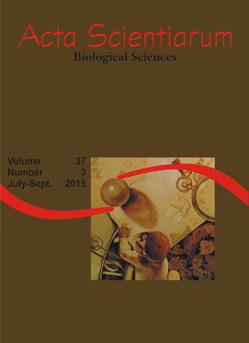<b>Effectiveness of quadrat sampling on terrestrial cave fauna survey - a case study in a Neotropical cave
Abstract
Quadrat sampling is a method used for a long time in plant ecology studies but only recently it has been used with focus on fauna. For the cave fauna samplings, there are rare works applying this methodology. The present study compared the methods of quadrat sampling with direct search qualitative for terrestrial cave fauna. For this, we conducted five sampling collections in a limestone cave in central Brazil. Quadrat sampling contributed with 121 exclusive species and 716 specimens and direct search qualitative method contributed with 91 exclusive species and 355 specimens. Mann-Whitney test evidenced significant differences between the two methods. We demonstrated that quadrat sampling method was slightly more efficient to analyze the species richness and much more effective to assess the abundance than the use of only direct search qualitative method, mainly considering tiny and/or cryptobiotic invertebrates (e.g., earth worms, symphylans, psocopterans, trichopterans, dipterans, small spiders, and small isopods). We recommend the association of different methods to test patterns in cave fauna, since incomplete sampling may lead to erroneous estimates and equivocated decisions about management, impact studies and cave conservation.
Downloads
DECLARATION OF ORIGINALITY AND COPYRIGHTS
I Declare that current article is original and has not been submitted for publication, in part or in whole, to any other national or international journal.
The copyrights belong exclusively to the authors. Published content is licensed under Creative Commons Attribution 4.0 (CC BY 4.0) guidelines, which allows sharing (copy and distribution of the material in any medium or format) and adaptation (remix, transform, and build upon the material) for any purpose, even commercially, under the terms of attribution.
Read this link for further information on how to use CC BY 4.0 properly.












1.png)




3.png)













